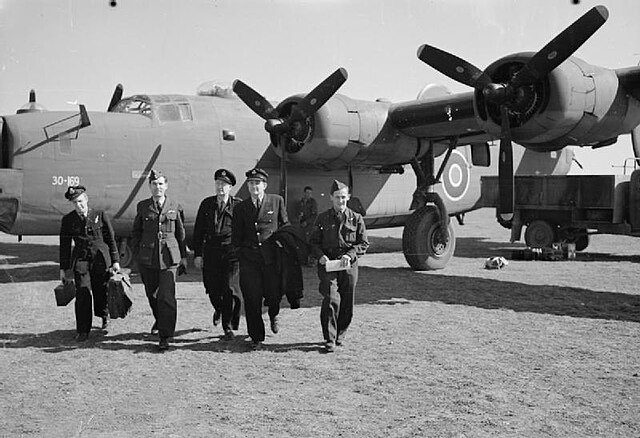RAF Ferry Command was the secretive Royal Air Force command formed on 20 July 1941 to ferry urgently needed aircraft from their place of manufacture in the United States and Canada, to the front line operational units in Britain, Europe, North Africa and the Middle East during the Second World War.
A mixed service and civilian crew of No. 45 Group RAF leave their Consolidated Liberator B Mark VI on arriving at Celone, Italy, after a ferry flight from Canada. Likely in the first months of 1944, as this is when 31 Squadron SAAF was re-equipping with Liberators.
RAF Darrell's Island in the Imperial fortress of Bermuda during World War II. This base was used throughout the war for trans-Atlantic ferrying of flying boats such as the Catalinas to the rear of photo, which were flown there from United States factories to be tested prior to acceptance by the Air Ministry and delivery across the Atlantic. RAF Transport Command flights (such as those flown by the Coronados in the foreground) also utilised the airfield.
Air Vice Marshal Donald Clifford Tyndall Bennett, was an Australian aviation pioneer and bomber pilot who rose to be the youngest air vice marshal in the Royal Air Force. He led the "Pathfinder Force" from 1942 to the end of the Second World War in 1945. He has been described as "one of the most brilliant technical airmen of his generation: an outstanding pilot, a superb navigator who was also capable of stripping a wireless set or overhauling an engine".
Air Vice Marshal Don Bennett c. 1943–44



